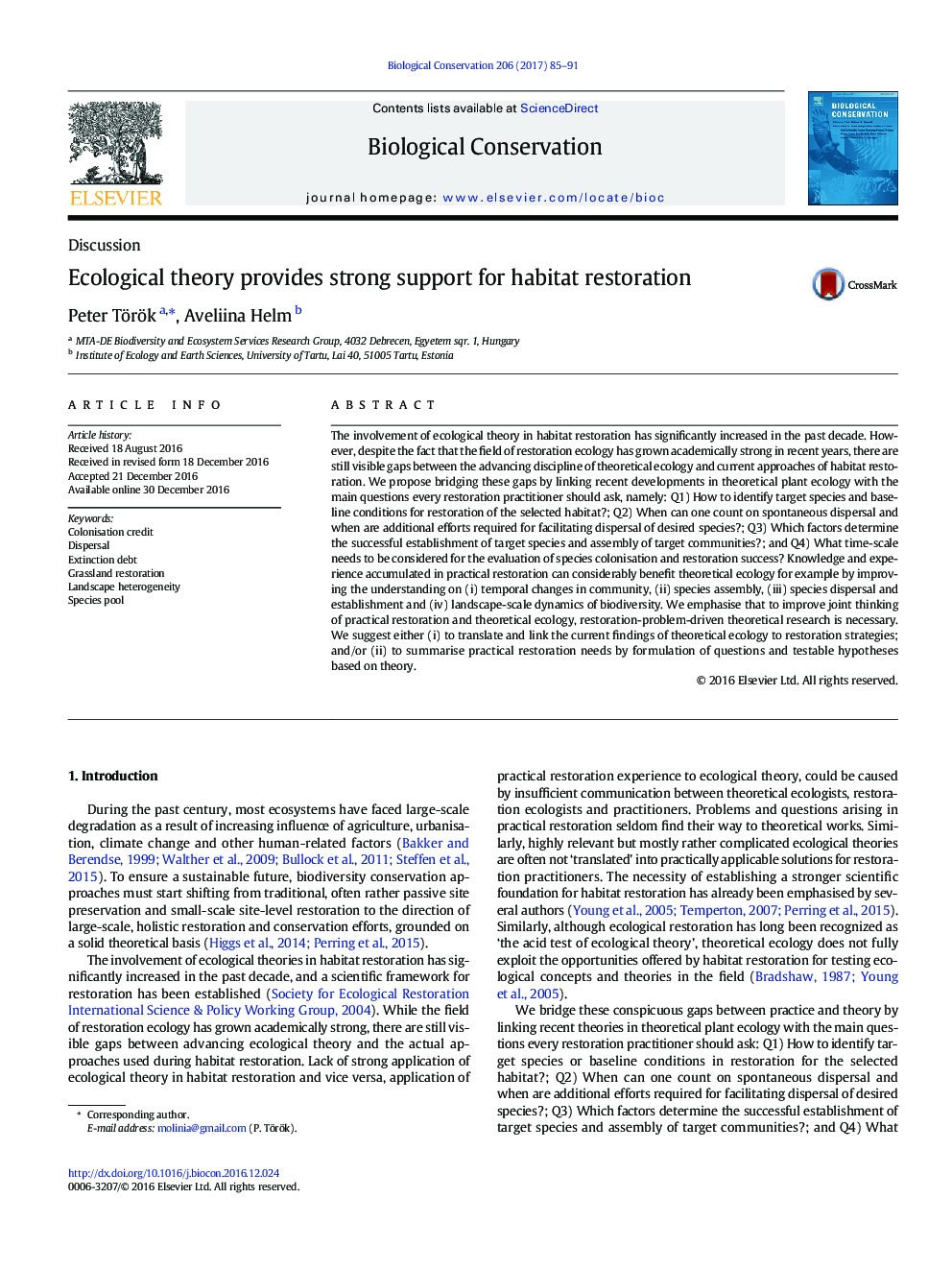| کد مقاله | کد نشریه | سال انتشار | مقاله انگلیسی | نسخه تمام متن |
|---|---|---|---|---|
| 5743281 | 1617896 | 2017 | 7 صفحه PDF | دانلود رایگان |

- Involving ecological theories in practical habitat restoration is vital
- There is a knowledge gap between theoretical ecology and practical restoration.
- We suggest implementing the current findings of theoretical ecology to restoration.
- Experiences from habitat restoration can boost theoretical research.
- It is also important to summarise the practical needs of restoration for theory.
The involvement of ecological theory in habitat restoration has significantly increased in the past decade. However, despite the fact that the field of restoration ecology has grown academically strong in recent years, there are still visible gaps between the advancing discipline of theoretical ecology and current approaches of habitat restoration. We propose bridging these gaps by linking recent developments in theoretical plant ecology with the main questions every restoration practitioner should ask, namely: Q1) How to identify target species and baseline conditions for restoration of the selected habitat?; Q2) When can one count on spontaneous dispersal and when are additional efforts required for facilitating dispersal of desired species?; Q3) Which factors determine the successful establishment of target species and assembly of target communities?; and Q4) What time-scale needs to be considered for the evaluation of species colonisation and restoration success? Knowledge and experience accumulated in practical restoration can considerably benefit theoretical ecology for example by improving the understanding on (i) temporal changes in community, (ii) species assembly, (iii) species dispersal and establishment and (iv) landscape-scale dynamics of biodiversity. We emphasise that to improve joint thinking of practical restoration and theoretical ecology, restoration-problem-driven theoretical research is necessary. We suggest either (i) to translate and link the current findings of theoretical ecology to restoration strategies; and/or (ii) to summarise practical restoration needs by formulation of questions and testable hypotheses based on theory.
Journal: Biological Conservation - Volume 206, February 2017, Pages 85-91